Last updated on April 4th, 2025 at 11:52 pm
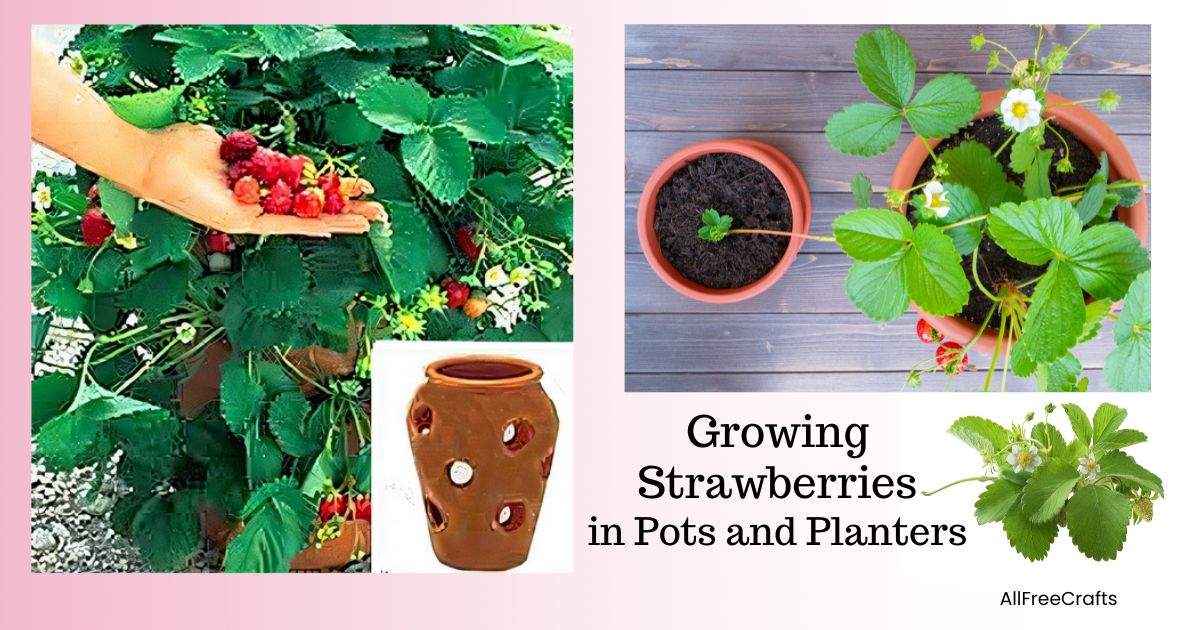
Strawberry pots have come a long way. Traditionally, a clay urn with multiple holes in the sides was used as a container for individual bare-root strawberries. If you can find them, these can still yield a bountiful harvest of clean, slug-free strawberries. But, today, there are many options for growing strawberries in containers.
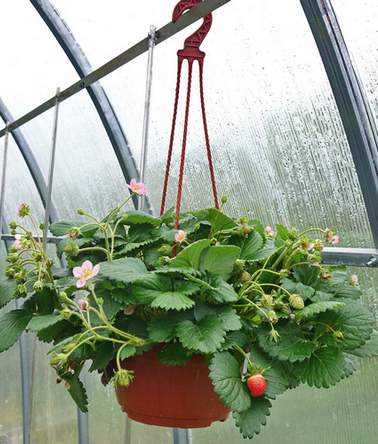
You can start with a simple plastic hanging basket of strawberries, either planted by you or purchased from the nursery already planted and growing flowers and fruit by the time you buy it.
Or you can buy tiered vertical planters, either fabric, plastic or terra cotta, from local hardware stores, nurseries or Amazon.
You may also already have suitable containers that you can fill with potting soil and bare-root strawberry plants.
Strawberries are easy to propagate, so think ahead and prepare for the time when your strawberry plants send out runners. These are the fledgling strawberry plants just about ready for transplanting to rows in the ground or containers.
You can also easily transplant wild strawberries to grow in a strawberry jar.
AllFreeCrafts is reader supported! Many supplies are found at thrift stores so try that first! However, if you buy from an affiliate link on this site, I earn a commission at no extra cost to you. As an Amazon associate, I earn from qualifying purchases. This has kept AllFreeCrafts.com online since 2002. Thank you!
Choosing the Right Pots or Planters for Growing Strawberries
Strawberries thrive in various containers, but when you choose your pot or planter, be sure it has holes in the bottom for drainage. This ensures that the plant roots won’t sit in water and rot.
Also look for sufficient depth. Pots or planters must be at least 6–8 inches deep for the roots to spread and thrive.
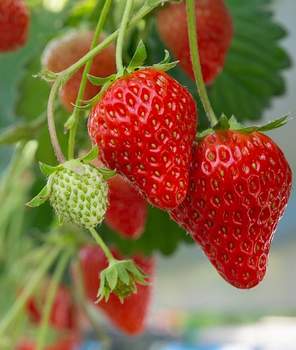
- Plastic Hanging Baskets: Ideal for trailing varieties of strawberries like ‘Tristar’ or ‘Albion.’ These baskets keep fruits off the ground, reducing the risk of rot and pests.
- Vertical Tiered Planters: Available from Amazon, in fabric, plastic or clay. Great for maximizing space and creating a striking visual display. Ideal for smaller spaces like balconies or patios.
- Clay or Ceramic Pots with Pockets: These traditional strawberry pots allow for multiple plants on top of, and down the sides, of one container. The side holes provide individual spaces for each plant, ensuring even sunlight exposure.
Strawberry Varieties to Consider for Containers

- June-bearing: Produce a large crop once a year, typically in late spring or early summer. Examples: ‘Chandler,’ ‘Honeoye.’
- Everbearing: Yield two main crops, one in spring and another in late summer or fall. Examples: ‘Quinault,’ ‘Ozark Beauty.’
- Day-neutral: Produce fruits continuously throughout the growing season. Examples: ‘Seascape,’ ‘Albion.’
Steps to Plant
- Prepare the Soil: Use a high-quality potting mix enriched with organic matter. Mix in compost or a slow-release fertilizer before planting. A slightly acidic pH (5.5–6.5) is ideal. If you don’t add fertilizer now you’ll need to fertilize the strawberries after planting in some other way.
- Plant Placement:
- Position crowns (where roots meet stems) just above the soil surface to prevent rot.
- In tiered or pocket planters, plant the lowest tier or pockets first and work upward to avoid disturbing already planted sections.
- Spacing: Allow 6–8 inches between plants to ensure proper airflow.
Care and Maintenance of Container Strawberries
Location:
Strawberries love full sun, but need watering frequently to avoid wilt and plant stress. Wild strawberries can tolerate partial shade and and also suited for transplanting into containers. Set the pots and planters in full sun on your patio or in your garden.
Watering
- Keep the soil consistently moist but not waterlogged. Water early in the morning to reduce evaporation.
- During hot weather, containers may need watering daily. Check the soil by poking your finger in the top inch of soil. If it is dry, then it’s time to water.
Fertilizing
- Use a balanced fertilizer (10-10-10) every 4–6 weeks during the growing season.
- Avoid over-fertilizing, as excessive nitrogen can lead to leafy growth at the expense of fruit production.
Pruning
- Remove runners (long stems that spread out) unless you’re propagating plants (see below). This helps the plant focus its energy on fruit production.
- Trim dead or yellowing leaves regularly.
Winterizing
- In colder climates, move containers to an unheated garage, shed, or indoors near a sunny window.
- Alternatively, insulate containers with straw, burlap, or bubble wrap to protect roots from freezing.
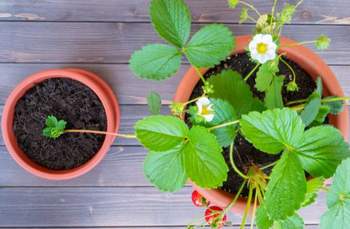
Propagation
- Using Runners:
- Let a healthy plant produce runners. Once a runner touches the soil in a nearby pot or pocket, it will develop roots.
- Allow the young plant to establish before cutting the runner connecting it to the mother plant.
- Division:
- For older plants, divide the crown into sections with roots and replant in fresh soil.
- From Seeds: Is possible, but not recommended as germination time is long and other propagation methods are more reliable for the domestic home grower.
Strawberries can be propagated through runners, division, or seeds, though runners are the easiest and most common method for container gardening.
Pest and Disease Management
Common Issues:
- Pests: Aphids, spider mites, and slugs.
- Solution: Use insecticidal soap or companion planting with marigolds or garlic.
- Diseases: Powdery mildew and gray mold.
- Solution: Ensure proper airflow, avoid overhead watering, and use fungicides if necessary.
Harvesting
- Pick strawberries when they are fully red and slightly firm.
- Harvest early in the morning for the best flavor.
With these practices, gardeners can enjoy fresh, homegrown strawberries from their pots, planters and containers, regardless of space constraints.
Mixed Planting of Strawberries and Flowers
Pairing flowers with strawberries in mixed containers can enhance the visual appeal while also providing practical benefits like pest control. Here are some flower options that pair well with strawberries:
Companion Flowers for Pest Control:
Yellow, red, or orange hued marigolds are known for repelling nematodes, aphids and other pests but choose shorter varieties. French marigolds (shorter) work well in containers without overshadowing strawberries. Nasturtiums, also a trailing flower, deters aphids, whiteflies and squash bugs.
Edible flowers such as violas and pansies are a great choice, as are the decorative alyssum and lobellia are also great choices for inter-planting with strawberries in containers.
If planting other plants mixed with strawberries, be sure to check their growing requirements before planting to be sure they are compatible. You’ll need to group plants that require about the same amount of sun, water, type of soil and amount of fertilizer without feeling cramped or deprived of water
Harvest Time
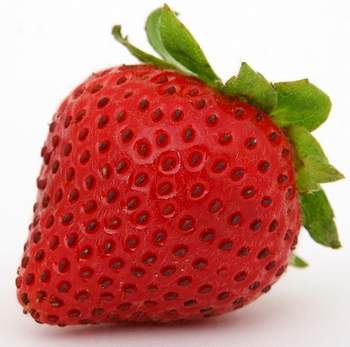
Pick ripened strawberries, every day, from your plants as soon as they are ready. This promotes further production of fruit and allows smaller strawberries more room to grow.
At this point, you deserve to treasure your first bite of this late spring fruit with all the taste-burst qualities it brings thanks to your homegrown care.
So much sweeter, nicer and more flavorful than any out-of-season strawberries shipped across a continent and packed in plastic.
Sweet, firm, perfect home-grown strawberry, unspoiled by pests, pesticides or travel, fresh from the garden, perfect. Enjoy!
More Strawberry Fun
Find a good spot in your garden and let wild strawberries form a ground cover that you can harvest every spring. Make small-batch microwave jam with your first small harvests and enjoy your homegrown strawberries through the winter. And, even though harvest time is a bit late for Valentines, treating your sweetheart to chocolate-dipped, homegrown strawberries is never a bad thing.
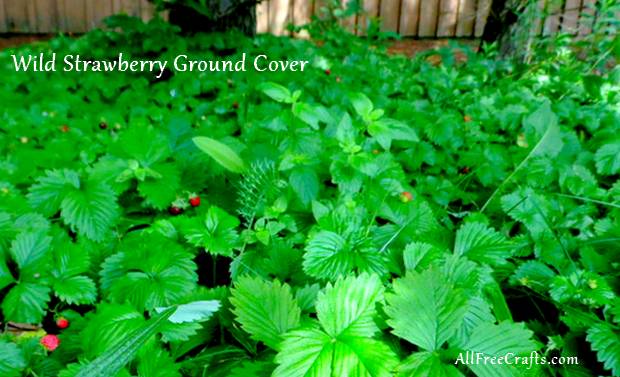



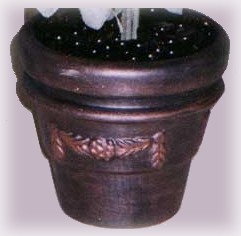

Leave a Reply